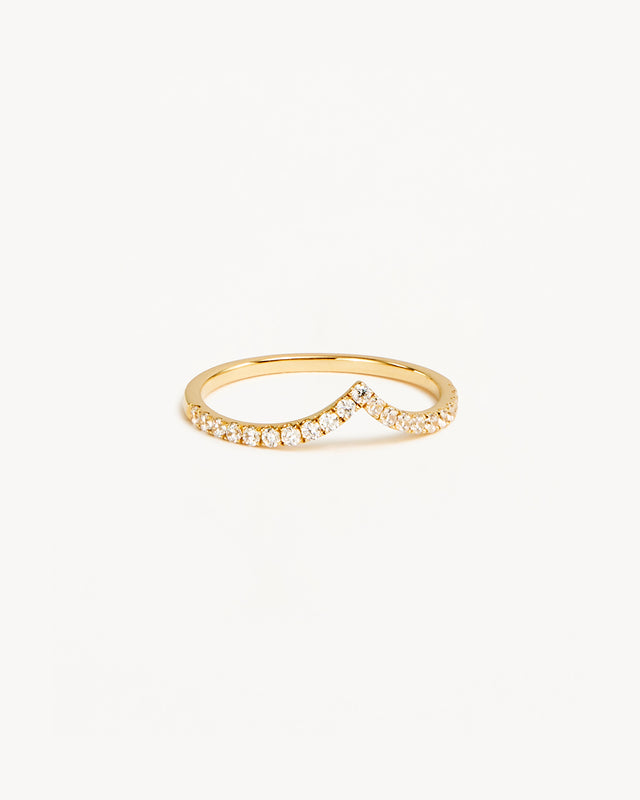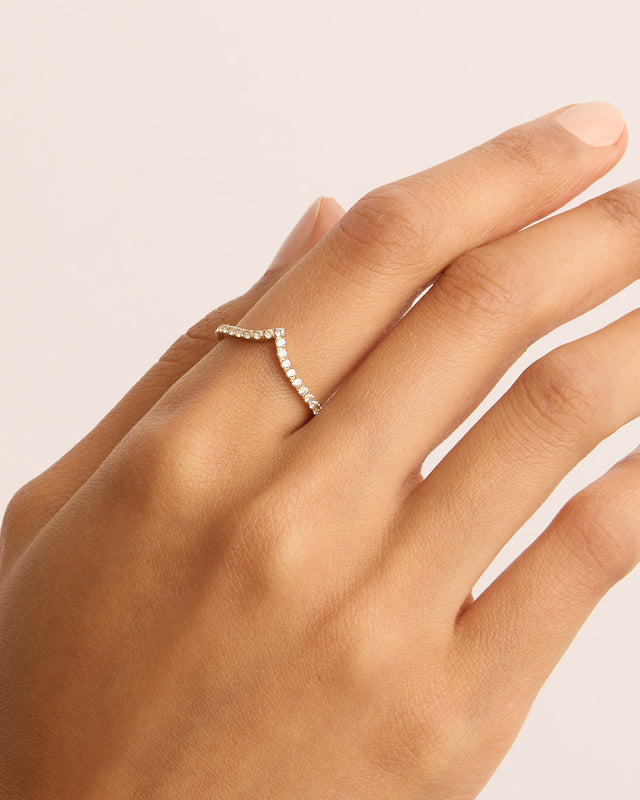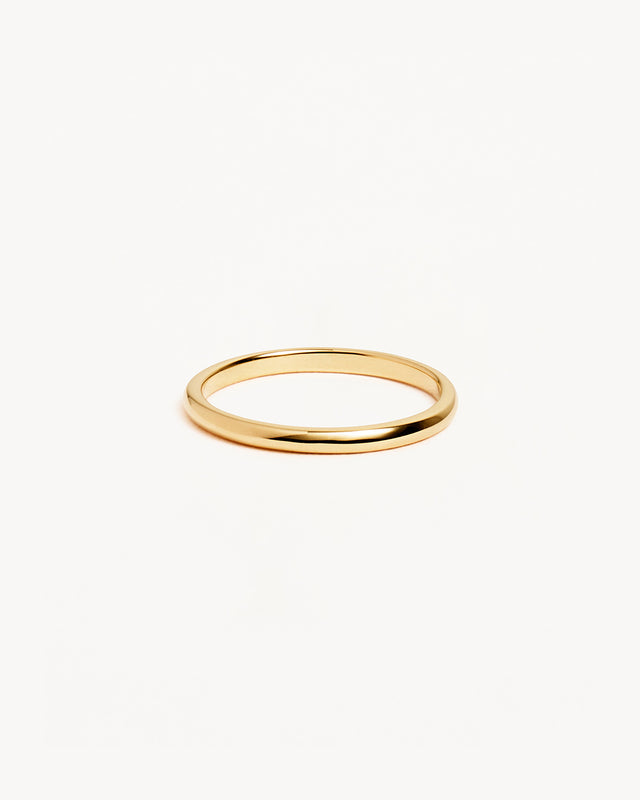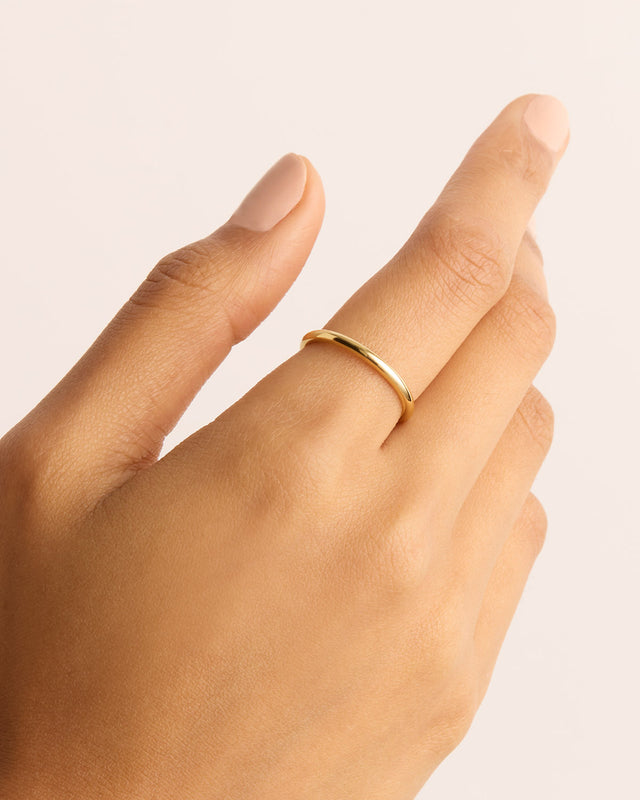Lab-Grown Diamonds
The introduction of lab-grown diamonds into our collection marks a new chapter in our commitment to sustainability, expert craftsmanship, innovation, and exquisite design.
Our GH-SI lab-grown diamonds— optically, chemically and physically identical to their natural counterparts— blossom into brilliant gemstones by replicating the Earth’s natural processes in a state-of-the-art, specialised laboratory. Just as with natural diamonds, each lab-grown diamond forms with its own unique blend of characteristics, making it one-of-a-kind.

Our Commitment To Ethical Production
We’re committed to using lab-grown diamonds which have been ethically sourced by our Responsible Jewellery Council and SCS Global certified manufacturer, based in Thailand.
Our lab-grown diamonds are therefore produced without the adverse environmental and social impacts associated with mining natural diamonds.
In Bloom
Lab-Grown Diamonds
Lab-Grown Diamond CollectionIn Bloom has been crafted with GH-SI lab-grown diamonds, hand-sorted for unmatched brilliance and quality.
Grading Lab-Grown Diamonds
Lab-grown diamonds are classified as real diamonds, and are therefore evaluated and graded by the same four Cs as natural diamonds:
- - Evaluating a Diamond’s Interaction with Light
- - GIA D-to-Z Colour Scale
- - GIA Diamond Clarity Scale - Flawless to I3
- - Measures a Diamond’s Apparent Size
At by charlotte, we offer laboratory-grown diamonds with the same colour and clarity grade as our natural diamonds (GH-SI1).

Frequently Asked Questions
Lab-Grown Diamonds
Is Natural Or Lab-Grown Right For You?
- Grown in a laboratory in a matter of weeks or months.
- Contain a chemical composition of pure carbon in a crystalline structure.
- Able to be produced in medium-large quantities. Wide range of availability.
- Potentially temperamental resale value.
- Affordable alternative to natural diamonds.
- Do not require mining.
- Require extensive scientific equipment and has a relatively high energy output.
- Evaluated and graded by GIA’s four Cs.
- One-of-a-kind.
- Traceable origins.
- Hardness: 10 on the mohs scale
- Refractive index: 2.417 – 2.419
- Formed deep below the Earth’s surface through intense heat and pressure, over millions of years.
- Contain a chemical composition of pure carbon in a crystalline structure.
- Availability dependent on mining, sourcing, and procuring. Considered “rarer”.
- Can resell for 25 – 50% of their purchase price.
- Can cost up to 30 – 50% more than lab-grown diamonds.
- Mined
- Require extensive human resources and environmental disruption.
- Evaluated and graded by GIA’s four Cs.
- One-of-a-kind.
- There can be ambiguity around the origins of natural diamonds.
- Hardness: 10 on the mohs scale
- Refractive index: 2.417 – 2.419
Frequently Asked Questions
Laboratory-grown diamonds, also known as cultured, man-made or engineered diamonds, are diamonds grown in highly controlled, state-of-the-art, specialised laboratories. Lab-diamonds are physically, optically, and chemically identical to mined natural diamonds – their difference lies in their origin. As they have the same carbon crystalline structure as natural diamonds, each lab-grown diamond is completely unique – from its colour and clarity, to its perfectly imperfect inclusions.
Trained gemologists can easily identify the difference between imitations and stimulants and natural diamonds. However, the difference between a lab-grown diamond and natural diamond is much more difficult to detect. Trained gemologists can usually differentiate between the two using standard gem-testing equipment. However, in some cases, a keener eye and more advanced specialised equipment is required – these can detect the fluorescence and growth patterns of diamonds which differ between labs and natural. To the untrained, naked eye, a lab-grown diamond and natural diamond will appear identical.
Laboratory-grown diamonds are often considered the more sustainable and ethical alternative to natural mined diamonds. However, it is important to note that there are positive and negative aspects to both. Understanding the different environmental impacts and ethical considerations both options present will allow you to make the right choice for you.
When purchasing a natural diamond as a conscientious consumer, the key thing to consider is whether it is conflict-free. Non-conflict-free diamonds, are entangled in violent civil wars, labour exploitation, and environmental disruption. Ethically sourced diamonds must be obtained through responsible mining and labour practices, and strict environmental guidelines. The Kimberley Process (KP), the world’s preeminent mined-diamond regulator, aims to remove conflict diamonds from the global supply chain. To guarantee that your diamond is not a ‘blood diamond’, ensure it has been sourced via the Kimberley Process (all natural diamonds at by charlotte are sourced via the KP).
Lab-grown diamonds are perceived as the more ethical alternative to natural diamonds as they do not require mining. While most natural diamonds are not traceable to their origins, the man-made nature of a lab-grown diamond can facilitate this traceability. Lab-grown diamonds are grown in highly controlled, state-of-the-art laboratories using innovative technologies and processes – their creation removes the extensive human resources, unethical labour and environmental disruption potentially required in acquiring a natural diamond.
However, the production of lab-grown diamonds doesn’t necessarily present a completely impact-free alternative. While they don’t require the same disruptive mining techniques, creating lab-grown diamonds requires highly advanced equipment to emulate the natural conditions that produce a natural diamond. The resulting power consumption and energy output still contributes to carbon emissions, though arguably less than the extraction of natural diamonds through mining.
Lab-grown diamonds are created by replicating the natural conditions and processes that result in a natural diamond in a highly controlled, state-of-the-art, specialised laboratory. A diamond can be created in a matter of weeks or months (depending on the size) – eliminating the mining process and human labour involved in procuring a natural diamond.
The growth process begins with a diamond seed enclosed in pure carbon. From there, there are two main methods:
Chemical Vapor Deposition (CVD)
- A diamond seed is sealed in a vacuum chamber and heated to a temperature of approximately 800 º C using microwaves or lasers. The chamber is then filled with a mixture of carbon rich gases, such as methane. Under these conditions, the gases will break down, causing pure carbon to precipitate out of the gaseous mixture and adhere to the diamond seed, crystalising into a beautiful lab-grown diamond layer by layer.
- This process has been likened to the way snowflakes form during a snowfall or how diamonds form in interstellar clouds.
- Some CVD diamonds do not undergo post-treatments to improve clarity or enhance colour. Because of this, they are considered the more “natural” of the two lab-grown methods.
- Compared to the HPHT method, the CVD method is more cost and the energy output is less intensive.
High Pressure /High Temperature (HPHT)
- The HPHT technique attempts to replicate the intense conditions of the Earth’s interior during the formation of a natural diamond. The diamond seed is placed into a specialised press where it is exposed to extremely high temperatures (1,300º to 1,600º C) and immense pressure (59,200 atm). These extreme conditions cause the carbon encasing to melt around the diamond seed, resulting in a full-sized beautiful lab-grown diamond.
- HPHT diamonds will often undergo further heat treatments to improve or enhance their overall colour and clarity.
Both methods are highly effective in producing diamonds with the same physical, optical, and chemical properties as a natural mined diamond. Like a natural diamond, lab-grown diamonds
emerge as “roughs” and are cut and polished by master diamond cutters.
Lab-grown diamonds are classified as real diamonds. They are graded using the same 4Cs as natural mined diamonds.
Lab-grown diamonds are not diamond imitations or stimulants; they are essentially compositionally identical to natural mined diamonds.
Lab-grown diamonds are classified as real diamonds and are therefore evaluated and graded by the same four Cs as natural diamonds:
- Cut - Evaluating a Diamond’s Interaction with Light
- Colour - The GIA D-to-Z Colour Scale
- Clarity - The GIA Diamond Clarity Scale – Flawless to I3
- Carat Weight - Measures a Diamond’s Apparent Size
At by charlotte, we offer laboratory-grown diamonds with the same colour and clarity grade as our natural diamonds (GH-SI1).
Some of our diamond keepsakes feature natural diamonds, and some feature lab-grown diamonds. The featured stone is always specified in the product description to avoid confusion.
The diamonds currently used in our jewellery are considered “melee” diamonds (less than 0.25CT/4mm approx.) and therefore do not come with certifications. However, all our natural diamonds are sourced via Responsible Jewellery Council certified manufacturers who adhere to the Kimberley Process when procuring mined diamonds. Our lab-grown diamonds are sourced viaResponsible Jewellery Council and SCS Global certified manufacturers.
At by charlotte, we are committed to using ethically sourced lab-grown diamonds. Our lab-grown diamonds have been sourced via our Responsible Jewellery Council and SCS Global certified manufacturer, based in Thailand.
Type
There are two types of lab-grown diamonds: Chemical Vapor Deposition (CVD) or the High Pressure - High Temperature (HPHT). We utilise both, pending availability of each type.
Colour: G-H
G-H colour is considered a ‘white’ diamond and is at the high end of the near colourless range.
This is on par with the natural diamonds in our range.
Grade: SI1
Slightly Included 1, is a grade on the diamond clarity chart indicating that the diamond has minor inclusions, invisible to the naked eye. This grade is considered “eye clean”. This is on par with the natural diamonds in our range.
Country of Origin:
India
For additional information, please contact our customer care team.








